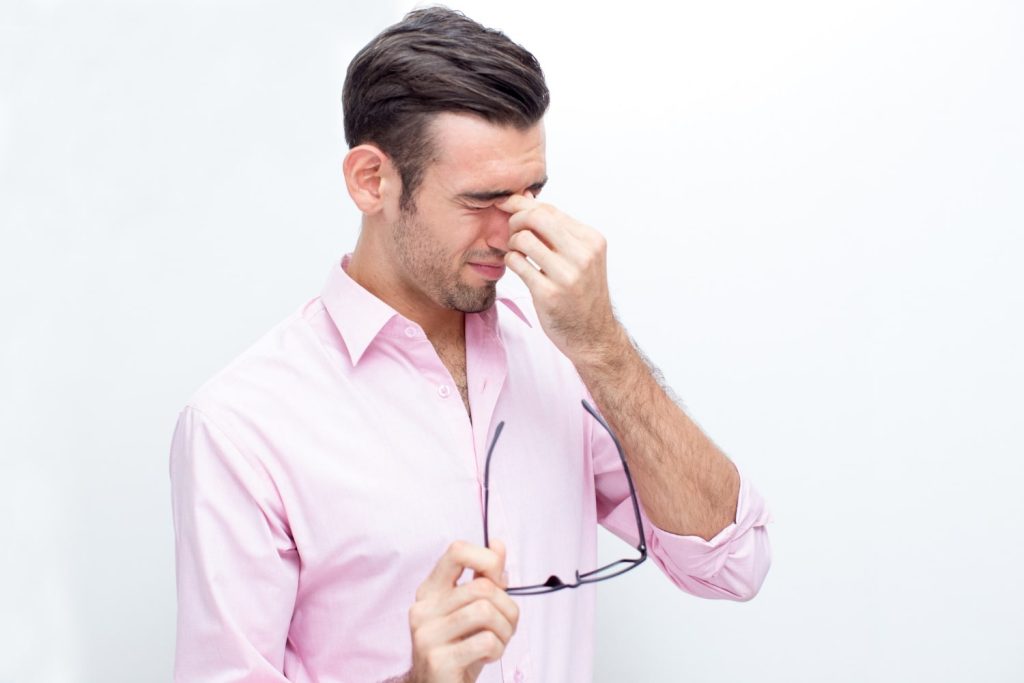
טיפות דמעות – מה זה ולמה משתמשים בהן?
טיפות דמעות הן תמיסות רפואיות או קוסמטיות שמטרתן להקל על
Dry eyelids, a common but often overlooked issue, can significantly affect a person's comfort and quality of life. Gaining insight into its causes, symptoms and potential treatments is fundamental to overall eye health.

Dryness of the eyelids can be due to different sources:
1. Environmental factors: exposing the eyes to harsh weather conditions such as wind, sun, cold or dry climate can lead to dryness of the eyelids. These conditions can evaporate the moisture in the eyes and the skin around the eyes and cause dryness.
2. Allergens and irritants: Airborne allergens such as dust and pollen, irritants such as smoke, chemicals and certain types of makeup can strip the natural moisture and oil content from the eyelids, causing them to dry out.
3. Medical conditions: Certain medical conditions, such as blepharitis, dermatitis, rosacea and Sjogren's syndrome, can cause dry eyelids. Blepharitis is an inflammation of the edges of the eyelids and can cause symptoms such as dryness, redness and irritation. Dermatitis and rosacea can cause inflammation and dryness of the skin, including the eyelids. Sjögren's syndrome, an autoimmune disease, attacks the body's tear and salivary glands, leading to dry eyes and mouth.
4. Age and hormonal changes: As we age, tear production often decreases, leading to dry eyes and eyelids. Hormonal changes, especially in menopausal women, can also reduce tear production and increase the risk of dry eyelids.
Dry eyelids show different symptoms:
1. Itchy or burning sensation in the eyes
2. Redness and swelling of the eyelids
3. A gloomy sensation, as if there were sand in the eyes
4. Skin peeling or skin scales on the eyelids
5. Sensitivity to light (photophobia)
6. Blurred vision
7. Repeated stye or chalazion
Each symptom may indicate a different cause, and a medical professional should be consulted for an accurate diagnosis.
The treatment of dry eyelids largely depends on the underlying cause:
1. Environmental causes: If the dry eyelids are caused by the environment, try to limit the exposure to the triggering factors. Wearing sunglasses to protect against wind and sun, using humidifiers indoors, or taking frequent breaks when using digital screens can help.
2. Over-the-counter solutions: Preservative-free eye drops, or gels or ointments can provide temporary relief of symptoms.
3. Medical treatment: In situations such as blepharitis, dermatitis or rosacea, you should be examined by a dermatologist and ophthalmologist who may prescribe eye drops for severe dryness such as antibiotic or anti-inflammatory drops. In addition, they may prescribe ointments or oral medications.
4. Eyelid hygiene: Regular eyelid cleaning, warm compresses, gentle eyelid massages and makeup removal can help keep the eyelids clean and moisturized. Using hypoallergenic and gentle care products can prevent irritation and dryness.
5. Dietary changes: Consuming foods rich in omega-3 fatty acids, such as fish, nuts, flaxseeds, or taking omega-3 supplements can support eye health by promoting tear production and reducing dry eye symptoms.
Dry eyelids, although common, can be a nuisance and have a negative impact on daily life. Understanding its causes and symptoms can help find effective treatment methods. It is important to remember that persistent symptoms require a visit to an ophthalmologist, a correct diagnosis and a personalized treatment plan.

טיפות דמעות הן תמיסות רפואיות או קוסמטיות שמטרתן להקל על

ויטמין C הוא אחד הוויטמינים החיוניים ביותר לבריאות העיניים, הודות

מרכז מומחים לאבחון וטיפול מתקדם בתסמונת העין היבשה ומחלות פני שטח העין















